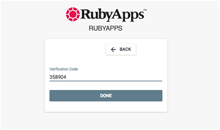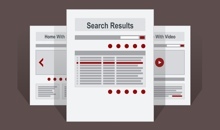Agency Agile: Developers, Designers, and Clients Making Great Things Together
It seems everyone these days - from startups to global corporations - is taking advantage of the project management method du jour: Agile
RubensteinTech is no exception. We're constantly looking to optimize the way we collaborate with our design partners and clients.
The Challenge with Agile at Agencies is...
In our agency setting, true Agile is a tough sell. While there are many projects that are best suited for the Agile framework in an agency setting (conceptual products, productizing a manual internal process, etc), requiring clients to checkin every 1-3 weeks and provide feedback/approvals on our progress before continuing with the project is typically a non-starter. Fixed costs and fixed timelines can also be an issue.
Clients usually have full time jobs outside of our projects. They hire outside agencies to complete projects and make decisions/judgment calls along the way based on expert experience -- and that's what they expect. Clients have already gone through an RFP Process, selected able design and tech partners, budgeted out the funds to do the work, choreographed internal buy-in, etc. - they've now passed the conch on to us.
This type of arrangement typically lends itself to the traditional waterfall model.
Question:
How can agencies take advantage of Agile efficiencies, if they're seemingly impractical within our model?
Answer:
A process that uses a hybrid of Agile methodologies within a Waterfall approach called Agency Agile.
The Process
The 1-3 week sprints noted above that require regular client feedback/approvals can instead be inwardly focused with internal product owners (project managers/digital producers) instead of external product owners (client contacts). Internal development teams then participate in daily scrums/stand ups and present features to internal product owners in weekly sprint demos. This takes the burden of constant feedback/approval away from the client, while still including regularly planned client reviews (Prototype, Beta, Launch) along the way to ensure feedback/approvals are provided at pivotal points to keep the project on track.
The Proof
To take that process up a level, involving our design partners as product owners in this paradigm guarantees we've implemented their creative to the 'T' and allows for modification of UX along the way. We've employed this process in varying degrees throughout the course of many projects, including a recent collaboration with Carbone Smolan Agency on the rebuild of their website.
In this case, our design partner was also our client - which made the project that much more efficient/productive. We continue to use this model in varying forms on all of our current nascent projects, and constantly evolve and improve our version of Agency Agile. This process iteration is rooted in the lessons learned that come out of our retrospective (project post mortem) meetings, and an embrace of new technologies - like Zeplin, InVision, etc.
In Summary
The best projects come from teams of experts choreographed together. When designers and clients work with an engineering team like ours, that understands design and is open to collaboration, these sprints are incredibly effective.
By employing Agency Agile you can pick and choose the best of both Agile and Waterfall to suit project requirements, organizational strengths, and your client's agile tolerance. Why be pigeonholed into one way of thinking? Instead, continuously refine and optimize your process by tailoring it to each project.







